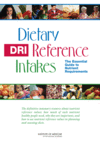As some of us prepare for holiday travel, it is fairly noticeable that gasoline prices have risen in recent weeks. U.S. prices currently range from $2.68/gallon in Denver to $3.29/gallon in San Francisco. According to data from the U.S. Energy Information Administration, the United States leads the world in petroleum consumption. As consumers look for ways to reduce their fuel costs by combining errands and other means, it’s a good time to look again at our energy prospects.
America’s Energy Future: Technology and Transformation assesses the status of energy-supply and end-use technologies in the United States, both at present and over the next two to three decades. It is intended to inform the development of comprehensive/sustainable energy policies by our nation’s decision makers and to provide the technical underpinnings for more detailed explorations of key energy-policy options. This book analyzes the potential of a wide range of technologies for generation, distribution, and conservation of energy.
Real Prospects for Energy Efficiency in the United States, part of the America’s Energy Future series, examines the potential for reducing energy demand through improving efficiency by using existing technologies, technologies developed but not yet widely utilized, and prospective technologies. According to this study, energy efficiency technologies that exist today or that are likely to be developed in the near future could save considerable money as well as energy. Fully adopting these technologies could lower projected U.S. energy use 17 percent to 20 percent by 2020, and 25 percent to 31 percent by 2030. This book evaluates technologies based on their estimated times to initial commercial deployment, and provides an analysis of costs, barriers, and research needs.
These titles, as well as others in the America’s Energy Future series, form a picture of our present situation and our choices for the future. The National Research Council has recently published a number of books on energy, all of which can inform and guide debate and decision-making.
 |
America’s Energy Future: Technology and Transformation Energy touches our lives in countless ways and its costs are felt when we fill up at the gas pump, pay our home heating bills,… |
 |
Real Prospects for Energy Efficiency in the United States America’s economy and lifestyles have been shaped by the low prices and availability of energy. In the last decade, however, the… |
 |
Electricity from Renewable Resources: Status, Prospects, and Impediments A component in the America’s Energy Future study, Electricity from Renewable Resources examines the technical potential for electric power generation with alternative sources such as wind, solar-photovoltaic, geothermal, solar-thermal,… |
 |
The transportation sector cannot continue on its current path: The volatility of oil prices threatens the U.S. economy, the large proportion of oil importation threatens U.S. energy security, and the massive contribution of greenhouse gases… |
 |
Hidden Costs of Energy: Unpriced Consequences of Energy Production and Use Despite the many benefits of energy, most of which are reflected in energy market prices, the production, distribution, and use of energy causes negative effects. Many of these negative effects are not reflected in energy market prices. When market failures like… |
 |
Technologies and Approaches to Reducing the Fuel Consumption of Medium- and Heavy-Duty Vehicles Technologies and Approaches to Reducing the Fuel Consumption of Medium- and Heavy-Duty Vehicles evaluates various technologies and methods that could improve the fuel economy of medium- and heavy-duty vehicles, such as tractor-trailers, transit… |
 |
Assessment of Fuel Economy Technologies for Light-Duty Vehicles Various combinations of commercially available technologies could greatly reduce fuel consumption in passenger cars, sport-utility vehicles, minivans, and other light-duty vehicles without compromising vehicle performance or safety. Assessment of…
|
 |
Transitions to Alternative Transportation Technologies–Plug-in Hybrid Electric Vehicles The nation has compelling reasons to reduce its consumption of oil and emissions of carbon dioxide. Plug-in hybrid electric… |
 |
Transitions to Alternative Transportation Technologies–A Focus on Hydrogen Hydrogen fuel cell vehicles (HFCVs) could alleviate the nation’s dependence on oil and reduce U.S. emissions of carbon dioxide, the major greenhouse gas. Industry-and government-sponsored research programs have made very impressive technical progress over… |




















































